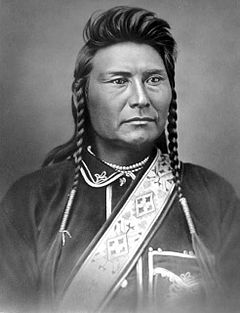After a rainy Monday night around the campfire, and
sleeping in a puddle, we packed up our wet gear and began our Epic
Cross-Country US History Road Trip.
Driving south, we made it to Boise, Idaho, our first night. Idaho is like a giant Settlers of Catan
board. We passed in succession
each of the hexes: rough-hewn rock, golden grain, fields of fluffy sheep,
brick-colored rock, and vast woods.
We’d like to give a shout-out to our friend Garrett, an Idaho native,
for telling us to avoid highway 95.
Instead, we took highway 55 through southern Idaho and had a beautiful
drive.
Food takes on a greater significance when you are
stuck in the car for hours on end. It’s very strange that as soon as I leave
home, I begin craving food I don’t normally care about, but cannot have on the
road.
I’ve never noticed how ubiquitous Subway restaurants
are. Every tiny town has a Subway! I think they've supplanted McDonald's.
We’ve seen a lot of these magpies as we drive. Only we call them “magenpies”, because
of this movie, one of our absolute favorites: My Family and Other Animals
Idaho Firsts: In
1836 Henry Spalding established a mission near Lapwai and opened Idaho's
first school, created the first irrigation system, printed the first book in
the Northwest and grew the first Idaho potato. According to the Idaho Potato Museum (yes, there is one), "the mighty Snake River is the mother of Idaho’s potato industry. It has, through the centuries, transported and deposited much of the silt that farmers cultivate today in lower lying fields along the river course. It provides much of the water that makes possible the growing of a plant that needs a soil moisture of eighty percent for ideal growth. As it plunges a mile downwards in elevation along its course, the Snake generates electrical energy that makes pumping from deep wells possible, and most of the potato growing areas in the state lie contiguous to the Snake River Valley as it twists its way in a 550-mile arc across southern Idaho." (http://idahopotatomuseum.com/history)
And speaking of potatoes, grocer Joe Albertson opened his first supermarket in Boise in 1939 and entrepreneur J. R. Simplot dehydrated the first potato in Caldwell in 1941, pioneering the way for the quintessentially American frozen french fry.
In
1877 the Nez Perce Indian
War occurred as pioneers and natives clashed, as the tribe was forcibly removed from their ancestral lands and forced to move onto the significantly reduced reservation in Lapwai. The skill in which the Nez Perce fought and the manner in which they conducted themselves in the face of incredible adversity led to widespread admiration among their military adversaries and the American public. In the end, Chief Joseph surrendered, uttering his famous words, "From where the sun now stands I
will fight no more forever."
In 1884, the nation's richest silver was discovered in the Coeur d'Alene area.
Butch
Cassidy and his Hole in the Wall gang made headlines by robbing a bank in Montpelier in 1896.
In 1920, a 15-year-old boy with the unlikely name of Philo Farnsworth from Rigby began to dream of concepts for the first television picture tube. Young Philo was later known as the "Father of Television."
I am strangely fascinated by some disasters, and this one caught my eye: the Teton Dam Failure. As the newly-constructed Teton Dam was being filled for the first time on Saturday, June 5, 1976 at 7:30 a.m., a muddy leak appeared. By 9:30 a.m. the dam had developed a wet spot which began to discharge water at 20 to 30 cubic feet per second. Local media appeared at the site, and at 11:15 officials told the county sheriff's office to evacuate downstream residents. Work crews were forced to flee on foot as the widening gap, now larger than a swimming pool, swallowed their equipment. At 11:55 a.m., the crest of the dam collapsed into the reservoir; and the remainder of the right-bank third of the main dam wall disintegrated. Over 2,000,000 cubic feet per second of water emptied through the breach into the of the Teton River canyon.





No comments:
Post a Comment